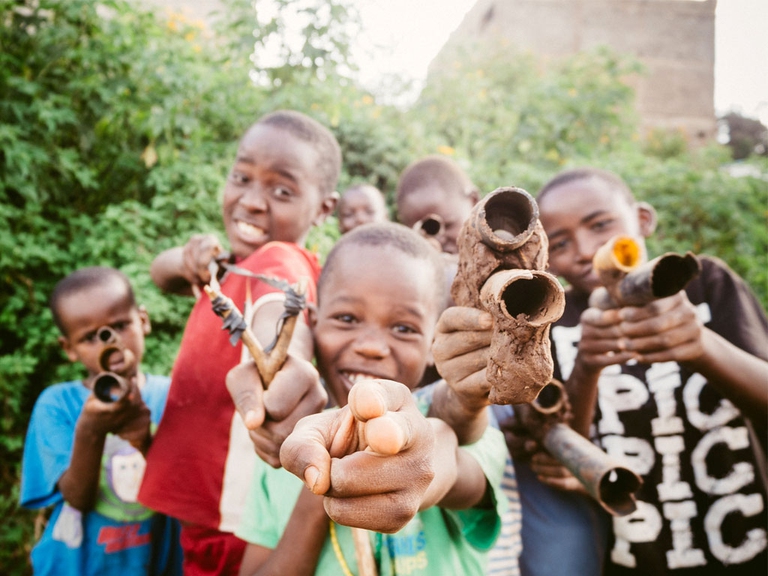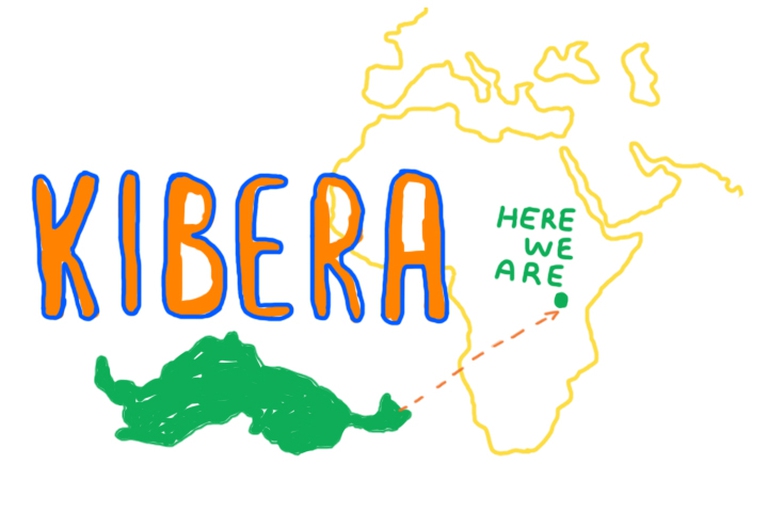
As per tradition after 12 years India held Mahakumbh, the world’s largest spiritual congregation that has been attracting pilgrims from across the globe.
“Ciak! Kibera” is the project that gave life to a documentary filmed in the streets of the slum of Kibera, Kenya, one of Africa’s biggest. And its plot is made of dreams.
Titus is a boy with an incredible power: with a “fist bump”, one of the greetings used among young people, he’s able to “catch” dreams. In one of his walks through the Kibera slum, one of the world’s biggest and the largest in Nairobi, Kenya, he manages to catch the dreams of a hopeful astronaut, a rockstar, a group of acrobats and superheroes, and make them come true. This is the plot line of the short film Bisu Ndoto, two words from two different languages – Sardinian and Swahili respectively – that have the same meaning: “dream”.
Sardinian is the language of the association Cherimus (which means “we want”, “we desire”) and Swahili is the language of the children and young people who grew up in Kibera and took part in the shooting of the short film, made with the technique of stop-motion. The aim of the Ciak! Kibera project, coordinated by Cherimus and financed by the autonomous region of Sardinia, wasn’t just to make a video but also to create a residency for artists within the slum. This was the idea of the Sardinian association’s founders: Emiliana Sabiu, Matteo Rubbi and Marco Colombaioni, the latter a volunteer and artist who studied at the Brera Academy in Milan who passed away prematurely in 2011. After travelling many times to Kenya, Marco’s aim was to give new possibilities to young people living in slums, thanks to art.
So, the dream is to create an itinerant residency for artists, named Darajart (which means “bridge between cultures” by matching the words “daraja” – bridge in Swahili – and “art”), which is currently hosted in the Kivuli Centre, one of the rescue centres for street children in Nairobi managed by the association Koinonia Community (based in Nairobi) and the NGO Amani (based in Milan, Italy). The hope is that Ciak! Kibera will be only the first step of this journey.
Thanks to this web of relationships, the 20 children who took part in the workshops became screenwriters, costume designers, scenographers and actors thanks to volunteers like Alberto Colzani, designer based in Milan who followed the project directly. “At the beginning of workshops, there wasn’t much will to make a video,” Colzani told LifeGate. “The idea came when children’s desires and fantasies allowed us to understand that art and its social role could become something real”.
The short film also became a documentary, written by Guido Bosticcio and Andrea Canepari (who also directed it) named Bisu Ndoto – Kibera’s dream, which through the words of its protagonists tell of everyday life in the slums, with its hurdles, as well as its incredible artistic power, while showing what went of behind the scenes of the documentary.
The soundtrack is the result of an artistic project to create an album and a limited-edition vinyl (350 copies) that collects the artistic sensibility of Kibera’s children mixed with the Sardinian sounds of Francesco Medda, stage name “Arrogalla”, who composed the music and wrote the texts. On one side of the 45-inch vinyl is the soundtrack of the short film, on the other side is the “soundscape”, an “audio landscape” of the slums recorded in early morning hours.
Every hour in the morning is important for those who must fight every day to find something new, among the challenges that a place like Kibera poses to its inhabitants. People need to be like superheroes, but also the other way round. If Spiderman’s uncle said that, “with great power comes great responsibility”, the children of Bisu Ndoto understood that their reality is a bit different – which means that with great responsibility comes great power. And their imagination is the greatest power.
Siamo anche su WhatsApp. Segui il canale ufficiale LifeGate per restare aggiornata, aggiornato sulle ultime notizie e sulle nostre attività.
![]()
Quest'opera è distribuita con Licenza Creative Commons Attribuzione - Non commerciale - Non opere derivate 4.0 Internazionale.
As per tradition after 12 years India held Mahakumbh, the world’s largest spiritual congregation that has been attracting pilgrims from across the globe.
Workers in tea gardens of West Bengal, India, that produces Ctc tea for domestic consumption complain that they have been devoid of basic facilities while political parties make hollow promises during every elections which are never fulfilled.
India is in the middle of the elections, but sadly none of the politicians have uttered a word on man-animal conflict that has been devouring several lives every year.
Manipur, a state in north-east India, is still reeling under the tremors of violence that broke out last year devouring lives and paralyzing the economy.
The government of Tanzania is currently planning to evict more than 80.000 indigenous Maasai people from their ancenstral land
A new UNU-INWEH report on the global bottled water industry reveals the massive scale of this market and the lack of strict quality controls.
Isatou Ceesay founded a social enterprise that is helping to fight plastic pollution and empowering women and young people to gain economic independence.
In 2020, Mihela Hladin made a radical decision that many, in recent times, have probably considered. This is her story, with photos by Matt Audiffret.
The Brazilian government has started evicting illegal gold miners, responsible for the health emergency that has hit the Yanomami people.









